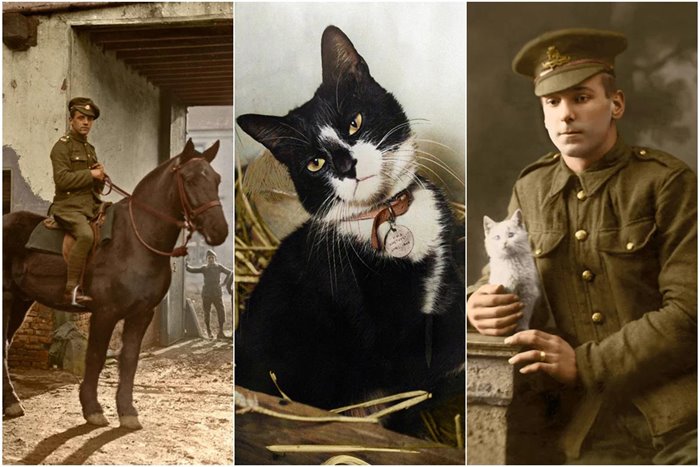The Story Of Animal Sacrifice In War In Historical Colored Images
A Tasteful Artist Has Given New Life To Wartime Animal Photos By Coloring To Pay Tribute To The Sacrifices Made By War Animals.
Tom Marshall is a professional artist in the field of coloring photos. He lives in Leicestershire, UK, and has worked with some of the world’s leading museums, photo archives, publishers, and numerous private clients.
Marshall lives near the Defense Animal Training Base, A base that has been training military dogs and horses until today. He is particularly fond of wartime stories about heroic animals that helped people in service and animals used as omens (lucky) and companions.
Every year, the Royal Army Veterinary Association participates in a city parade on Remembrance Day (Remembrance Sunday) so that the memory of animals sacrificed in the past and present wars will not be forgotten.

The photo above shows an unidentified British Royal Artillery soldier with his kitten. This photo was taken around 1917. In times of war, animals were often brought into the trenches and sometimes as omens for the regiment. In this example, the kitten may have come from a local farm or rundown village.
Paying his tribute to the influence of these animals, Marshall has colored a series of images, some of which are over a hundred years old. He notes that some of the photographed animals were later officially recognized by being awarded the Deakin Medal. The Deakin Medal is an award created to commemorate the work of animals in World War II and is still awarded today.
Marshall says about his work:
I colored the photos to pay tribute to the animals; I believe color adds another dimension to historical images and helps our modern eyes connect with subjects more than black-and-white photos.
Expressing regret about the lack of attention and understanding of black-and-white images, he adds:
I have noticed that the younger generations ignore black-and-white images. By coloring the photos, I hope more people will be interested in knowing about the subjects and what the animals have experienced in the last century.
Each photo tells a story of the relationship and common bond between people and animals. Although animals have unconditional love and devotion to humans, this collection reminds us that they, too, are victims of human wars. Animals did not choose to be at war, But the situation has led them to fight.
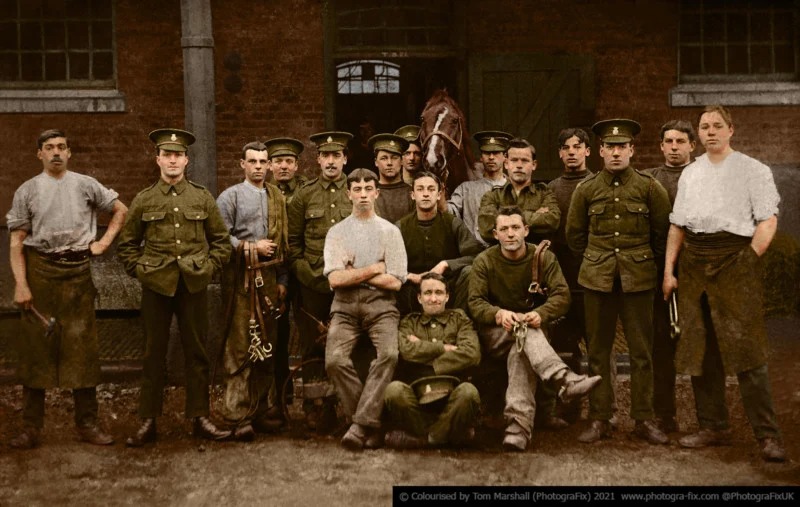
This group photo is a picture postcard that dates back to December 1909. Descendants of William Field (third from left) commissioned Marshall to colorize the image.

Carrying a cat has been common in many commercial and exploratory ships dating back to ancient times. Cats were used to kill and attack rodents that damaged ropes, woodwork, food, and warehouses and spread disease.
The two kittens lived aboard HMS Hawkins, a Royal Navy heavy cruiser during World War I.
These kittens are pictured inside a 7.5″ ball barrel. In 1975, the Royal Navy banned cats and other pets from all ocean-going ships for health reasons; However, cats are still ordinary on many private ships.
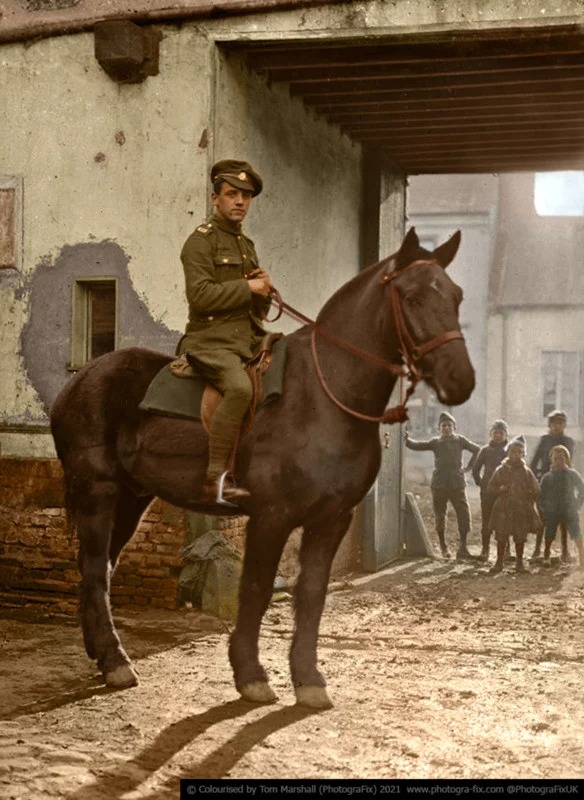
An unknown British soldier of A Squadron, Northern Ireland Horse Regiment. It is estimated that eight million horses, mules, and donkeys died during the First World War.
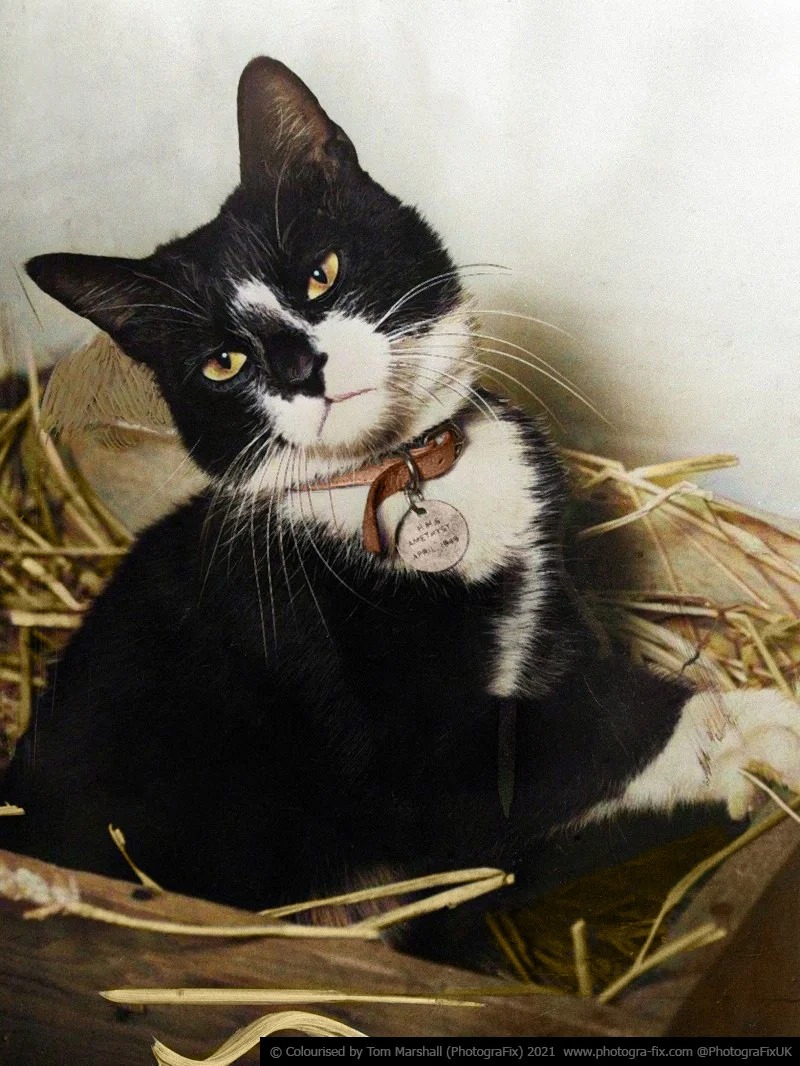
Simon was a ship’s cat serving on the Royal Navy battleship HMS Amethyst. Simon quickly gained notoriety for his rudeness, leaving dead mice as gifts in sailors’ beds and sleeping in the captain’s hat. He was skilled at taking and killing his hair on the lower floors.
In 1949, in the Yangtze Incident, Simon was awarded the Deakin PDSA Medal after surviving and being injured by a cannonball that tore through the captain’s cabin and killed the captain.
In this incident, the seriously injured cat crawled on the deck and was immediately taken to the medical bay; where the rescued ship’s medical staff removed four pieces of shrapnel from his body; But they didn’t expect the cat to survive the night.
However, Simon managed to survive and returned to his previous duties (rat catching) after a period of recovery. He remains the only cat to have received the Deakin Medal until 2021.
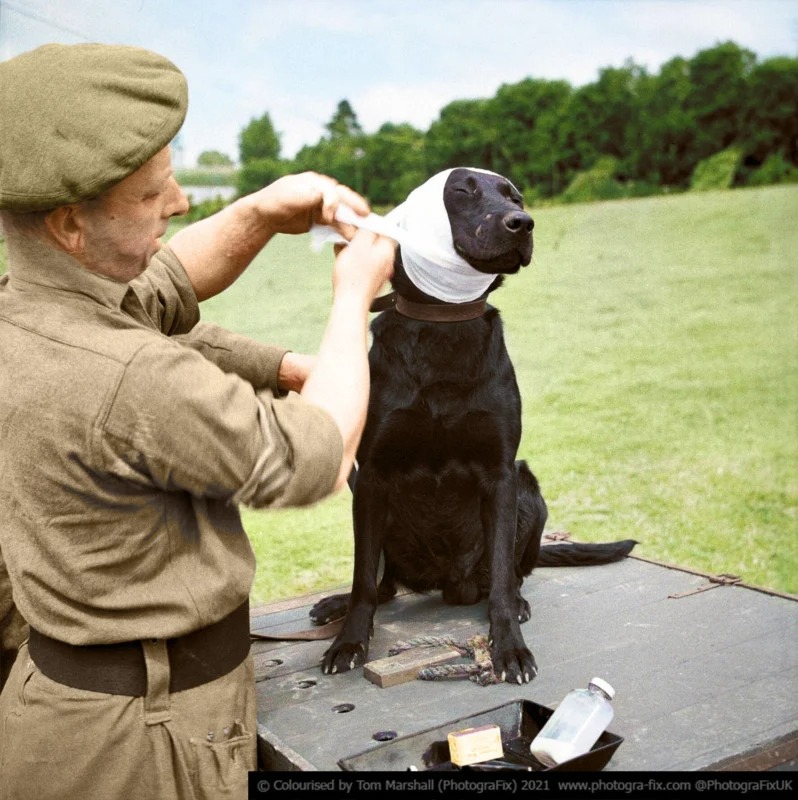
On July 5, 1944, a Royal Army Veterinary Corps sergeant dressed the wounded ear of Jasper, a minesweeper dog, in Normandy.
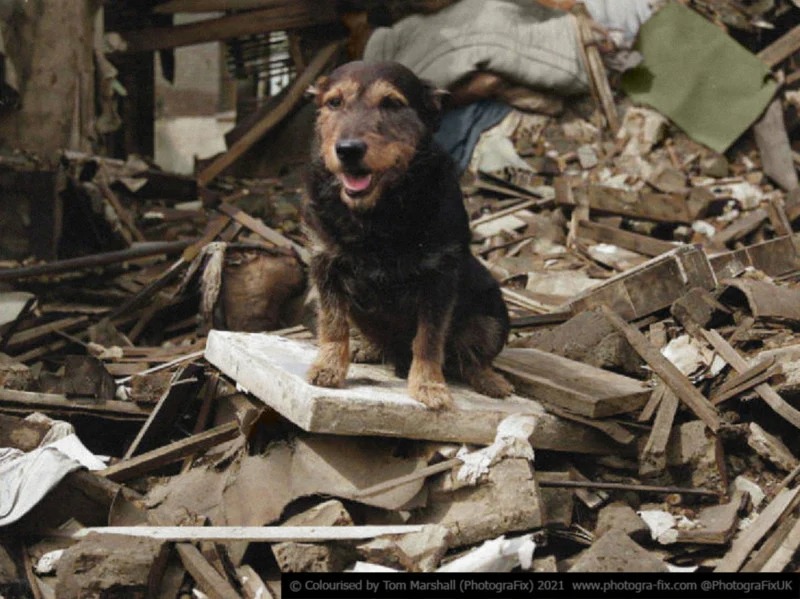
Rip was a mix-breed terrier that received the Deakin Medal for bravery in 1945. In 1940, Air Raid Superintendent A. King found him in London and thus became the service’s first search and rescue dog. Rip has saved the lives of more than 100 people.
He was not trained for search and rescue, But he did it instinctively.
His success partly inspired authorities to train search and rescue dogs at the end of World War II.
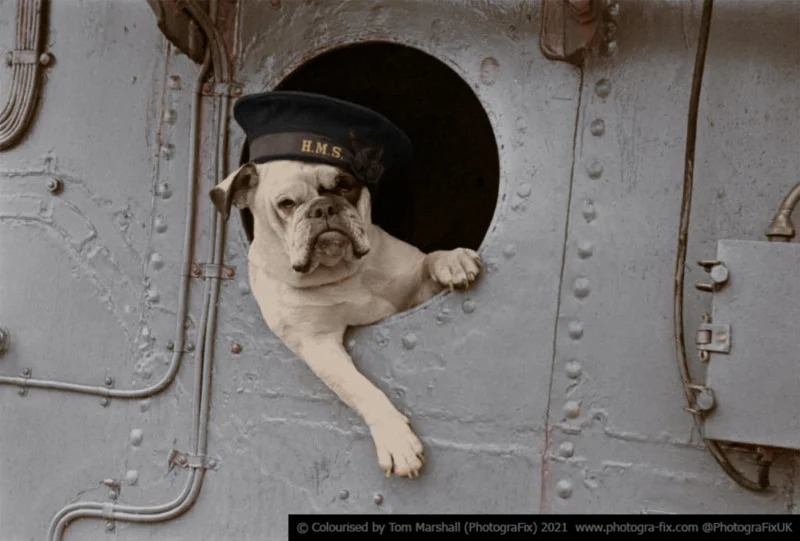
Venus, the lucky bulldog of the destroyer HMS Vansittart in 1941
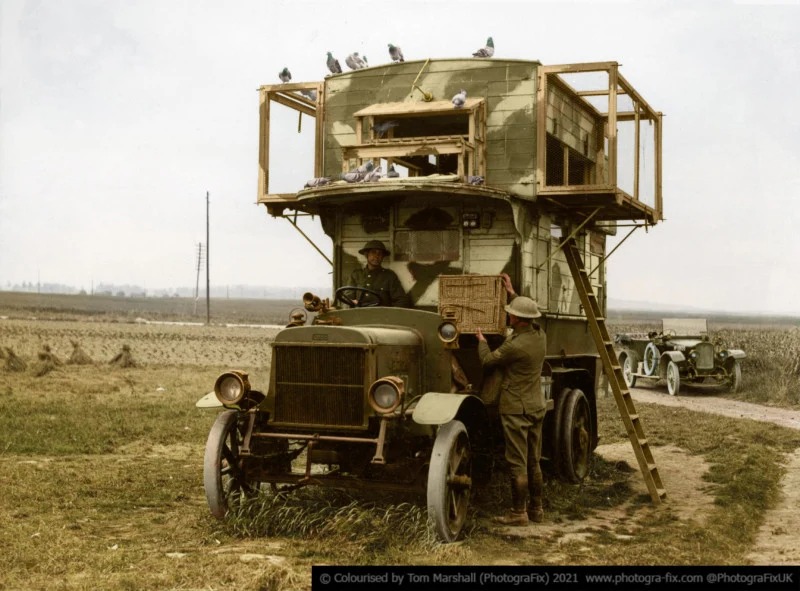
A type B bus has been converted into a pigeon house and sends messages from the front line to headquarters. Over 100,000 carrier pigeons were used as messengers throughout World War I. Records show that they delivered 95% of their messages correctly.

Horse and soldier carrying boots. During World War I, horses were necessary for transportation because of their reliability and ability to travel over most terrains. The mud covered the path to a depth of several centimeters, and this issue is recognizable due to the circumference of the soldier’s boots and the fact that the horse’s hoof is no longer visible.
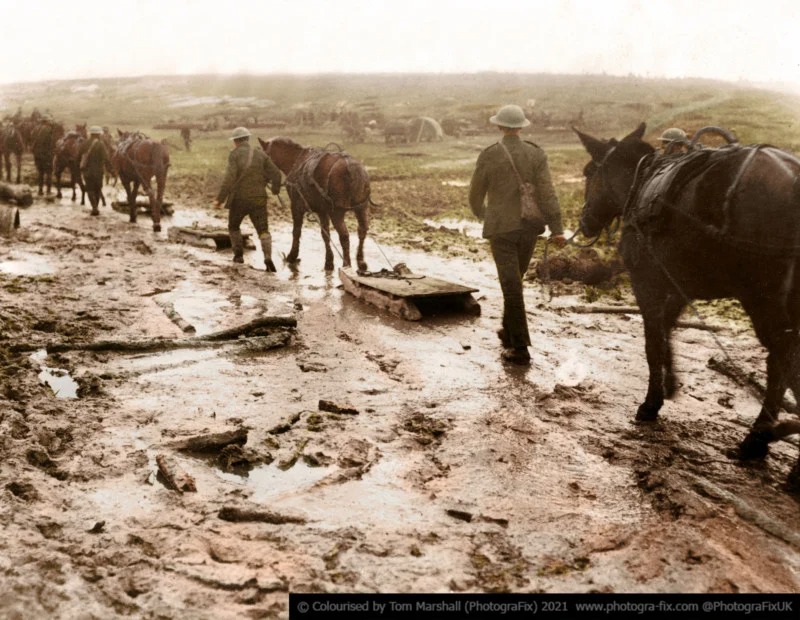
Horses pulling makeshift sleds through the mud of World War I

Captain and Horse Veterinary Corps, Royal Canadian Army, 1916

The lucky dog of HMS Stork in Liverpool, May 18, 1941
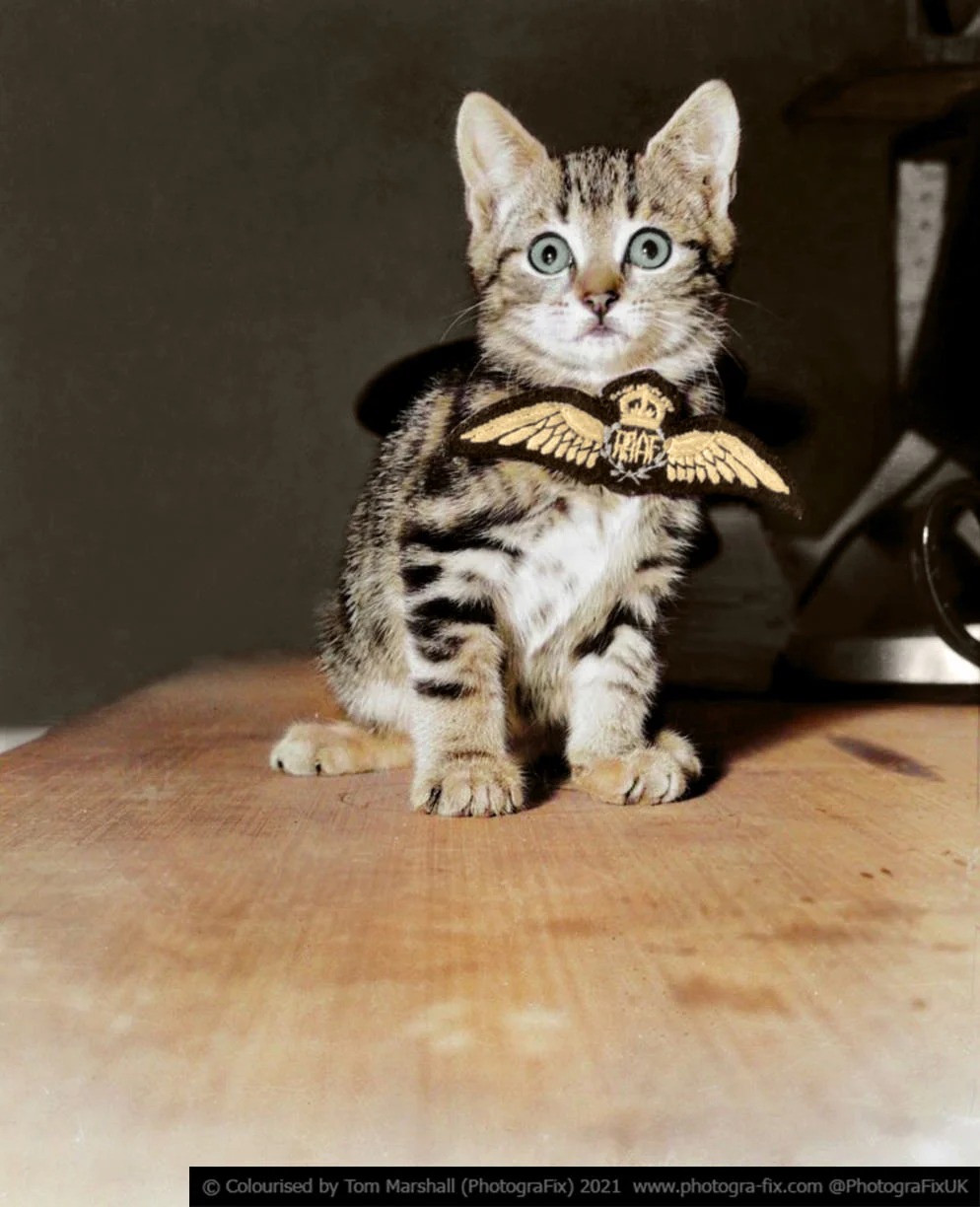
The aircrew was a young cat taken into the custody of the Royal Australian Air Force Flight Training School.
You can see more pictures of this category on Tom Marshall’s Instagram page.
***










